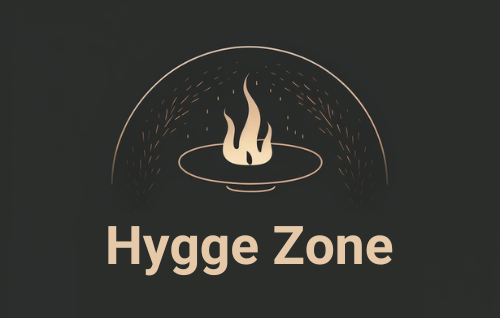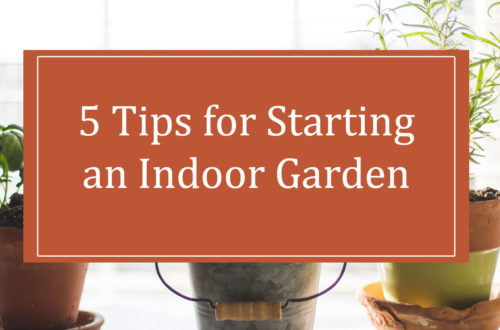
11 Tips to Help You Declutter Your Home
As we finally wave goodbye to the turbulent year that 2020 has proved to be, many people are busy making resolutions for 2021. If you’ve been spending a lot of time indoors over the past 12 months, you’re probably thinking about improving your living space and leading a less wasteful life. There’s nothing like a pandemic to put one’s consumerist habits into perspective, after all.
If you’re hoping to start afresh in 2023, it could be time to declutter your home. As well as making an excellent New Year’s resolution, getting rid of old or unwanted items is likely to improve the atmosphere of your living space and even improve your mental health.
If you’re unsure about how to start decluttering, we’ve listed a few popular methods you may find helpful. What works for one person may not work for another, so try to find a technique that suits your personality and lifestyle.
Use one or all of these methods to declutter your home.
1. The Konmari Method
The Konmari Method, created by Japanese organization expert Marie Kondo, is a popular and effective method for decluttering your home. The method is based on the idea that by keeping only the items that bring joy to your life, you can create a more organized and peaceful living space.
To start with the Konmari Method, begin by decluttering one category at a time. This can include items such as clothing, books, papers, and miscellaneous items. Take all of the items in a category and put them in a pile. Then, go through each item one by one and ask yourself whether it brings you joy. If the answer is no, it’s time to get rid of it. This can mean donating it, recycling it, or throwing it away.
One of the key benefits of the Konmari Method is that it encourages you to focus on what brings you happiness, rather than just getting rid of things for the sake of decluttering. By surrounding yourself with only the things that bring joy to your life, you can create a home environment that is more harmonious, functional, and aesthetically pleasing.
In addition, the Konmari Method also teaches you how to properly fold and store your items in order to maximize your living space. This is a key aspect of the method, as it helps you keep your home organized and clutter-free for the long term.
Learn more about the Konmarie Method in Marie Kondo’s book, Spark Joy.
2. The Four Box Method
The Four Box Method is a quick and efficient decluttering method that can help you get rid of unwanted items in your home. The premise is simple – you just need to gather four large boxes or containers and label them with the words “relocate”, “trash”, “donate”, and “sell”. Then, you simply go through your belongings and place each item in the appropriate box based on what you want to do with it.
The “relocate” box is for items that you want to keep but that are in the wrong place. This might include items that belong in another room, or items that are taking up valuable space. Simply place these items in the “relocate” box and move them to their proper location later.
The “trash” box is for items that are no longer useful or necessary. This might include broken items, old magazines, or clothes that no longer fit. Simply place these items in the “trash” box and dispose of them properly.
The “donate” box is for items that you no longer need but that are still in good condition. This might include clothes, toys, or household items. Simply place these items in the “donate” box and take them to a local charity or donation center.
The “sell” box is for items that are in good condition and that you no longer need but that you think might have some value. This might include clothing, electronics, or other items. Simply place these items in the “sell” box and sell them later through a garage sale, online marketplace, or consignment store.
The Four Box Method is a simple but effective way to declutter your home and get rid of unwanted items quickly and efficiently. By using this method, you can streamline the decluttering process, minimize the amount of time and energy you spend on the task, and ensure that you keep only the things that you really need.
3. Swedish Death Cleaning
Swedish Death Cleaning is a decluttering technique that focuses on reducing clutter in one’s home, by imagining the possessions that you would leave behind for your loved ones to deal with after you are gone. This method is based on the idea that by decluttering one’s home before death, you can spare your loved ones the time, effort, and emotional burden of having to do it themselves.
The process of Swedish Death Cleaning involves taking inventory of all the possessions in your home and asking yourself whether they would bring value to your family and loved ones. If the answer is no, it’s time to let the item go. This can be done in a phased approach, starting with the items that are most difficult to part with, and then working your way through the rest of your belongings.
One of the main principles of Swedish Death Cleaning is to only keep items that bring joy and happiness. This means letting go of items that may have sentimental value but no practical use, or items that are taking up valuable space in your home. By focusing on keeping only the items that bring you joy, you can create a home environment that is more peaceful, harmonious, and functional.
Another key aspect of Swedish Death Cleaning is to consider how you would like your belongings to be handled after you are gone. You can make arrangements for your family to donate items to a charity, pass them on to a friend, or simply dispose of them in a responsible manner.
To learn more about Swedish Death Cleaning, check out Margareta Magnusson’s book, The Gentle Art of Swedish Death Cleaning.
4. The Packing Party Method
The Packing Party Method is a fun and effective way to declutter your home and simplify your life. The basic principle of this method is to fill a box with items that you are unsure about and then wait for 21 days to see which items you actually use during that time.
To start a Packing Party, select a room in your home that needs decluttering, and gather all of the items that you are unsure about keeping. Fill a large box with these items, and then seal it up. The key is to not open the box for 21 days. This time period gives you the opportunity to live your life as usual, using the items that you need and want, while the items in the box remain untouched.
After 21 days, it’s time to re-evaluate the items in the box. Ask yourself which items you have missed or needed during the past three weeks. If you haven’t used an item in 21 days, it’s unlikely that you will use it in the future, so it’s probably safe to get rid of it.
This method is particularly helpful for people who find it difficult to make decisions about what to keep and what to get rid of. By allowing the items to speak for themselves, the Packing Party Method removes the stress and emotional attachment from the decluttering process.
In addition, this method can be a fun activity to do with friends or family members. Invite your loved ones over for a Packing Party, and declutter together. This can be a great way to bond and support each other as you simplify your lives.
5. The 90/90 Method
The 90/90 Method is a quick and straightforward approach to decluttering your home. The basic principle is simple: if you haven’t used an item in the past 90 days and you don’t plan to use it in the next 90 days, it’s time to get rid of it.
The 90/90 Method is a great starting point for those who are new to decluttering, as it provides a clear and objective criterion for determining which items to keep and which to get rid of. This method is especially effective for those who are short on time, as it can be done quickly and without the need for extensive planning or preparation.
To start the 90/90 Method, simply select a room in your home and begin by going through each item one by one. Ask yourself whether you have used the item in the past 90 days and whether you plan to use it in the next 90 days. If your answer to both questions is no, it’s time to get rid of it. This can mean donating it to a charity, passing it on to a friend, or simply throwing it away.
One of the key benefits of the 90/90 Method is that it encourages a minimalist approach to living. By focusing on only keeping items that you truly need and use, you can create a home environment that is less cluttered, more functional, and more peaceful.
6. The Reverse Hanger Method
This is useful if you want to declutter your wardrobe, and it is very easy. Simply hang all your clothes so that the hooks of the hangers are facing toward you. If you wear an item, turn the hanger inwards. After six months or so, consider donating or throwing out any items that have not been worn.
7. The Capsule Wardrobe Method
Let’s face it – most of us only use a small fraction of our available wardrobe. The capsule wardrobe method involves paring your wardrobe back to somewhere between 30 and 60 items and getting rid of everything else. As well as clearing plenty of space, it will encourage you to get creative with your outfit ensembles!
8. The Five-Minute Method
The Five-Minute Method is a great approach to decluttering for those who are short on time. The basic idea is to set aside just five minutes each day to focus on decluttering a specific area of your home. Over time, this small daily effort will add up, and you’ll start to notice a significant difference in your living space.
To get started with the Five-Minute Method, simply choose a room or area in your home that you’d like to declutter. Then, set a timer for five minutes and start going through items one by one, making decisions about what to keep, what to donate, and what to throw away.
One of the key benefits of the Five-Minute Method is that it doesn’t require a lot of time or effort, making it accessible to even the busiest of people. Additionally, by focusing on just one area at a time, you’ll be able to avoid feeling overwhelmed by the decluttering process.
Another benefit of the Five-Minute Method is that it’s flexible and can be tailored to fit your schedule. If you find that you have more time one day, feel free to spend more than five minutes decluttering. On days when you’re short on time, simply stick to the five-minute limit.
9. The Helpful Friend Method
Okay, so this method isn’t exactly original, but it’s lots of fun! Ask a friend to come over and help you to declutter. You could end up having lots of fun digging through old photos and your tragic fashion items from the ‘90s!
10. An Item a Day
The “An Item a Day” method is a gradual approach to decluttering that aims to help people simplify their lives one item at a time. The concept is simple: every day, choose one item in your home that you no longer need or want, and give it away. This could be anything from an old piece of clothing, a kitchen gadget, a book, or a piece of furniture.
One of the benefits of this method is that it’s a slow and steady approach to decluttering that allows you to make decisions about your belongings at a manageable pace. This can help you avoid feeling overwhelmed or stressed, which is often the case when people try to declutter their entire home all at once.
Another benefit of this method is that it helps you to focus on the value of your possessions and whether they bring you joy or not. By giving away one item each day, you’re forced to make decisions about what is truly important to you and what is not.
As the year goes on, you may find that it gets harder and harder to choose an item to give away each day. This is where the challenge lies and it is a good opportunity to take a closer look at your belongings and determine whether they hold sentimental value or not.
11. The Photography Method
The “Photography Method” is a unique approach to decluttering that leverages the power of visual documentation to motivate and inspire people to tackle the task of organizing their living spaces. The method involves taking photos of the rooms you want to declutter, both before and after the decluttering process.
One of the key benefits of this method is that it provides a tangible representation of the progress you’ve made. Seeing the before and after photos can be a source of motivation and inspiration, helping you to stay focused on the task at hand and providing you with a sense of accomplishment when you’re finished.
Another benefit of this method is that it provides a record of what your living space looked like before you started decluttering. This can be a helpful reference when you’re making decisions about what to keep and what to let go of.
For those who struggle to finish projects, the Photography Method can be especially effective. By seeing the before and after photos, you’ll be reminded of the transformation that has taken place and be motivated to keep going until the entire property is sorted.
There Isn’t a Single Right Way to Declutter
decluttering your home is an excellent New Year’s resolution and can bring a positive impact on both your physical and mental well-being. There are various methods to choose from, including the Konmari Method, the Four Box Method, and Swedish Death Cleaning, each with its unique approach to decluttering. Choose the method that best suits your personality and lifestyle, and start the journey to a clutter-free home.
Whether you aim to improve your living space, lead a more mindful and sustainable life, or spare your loved ones the burden of sorting through your possessions, decluttering is a step in the right direction.





